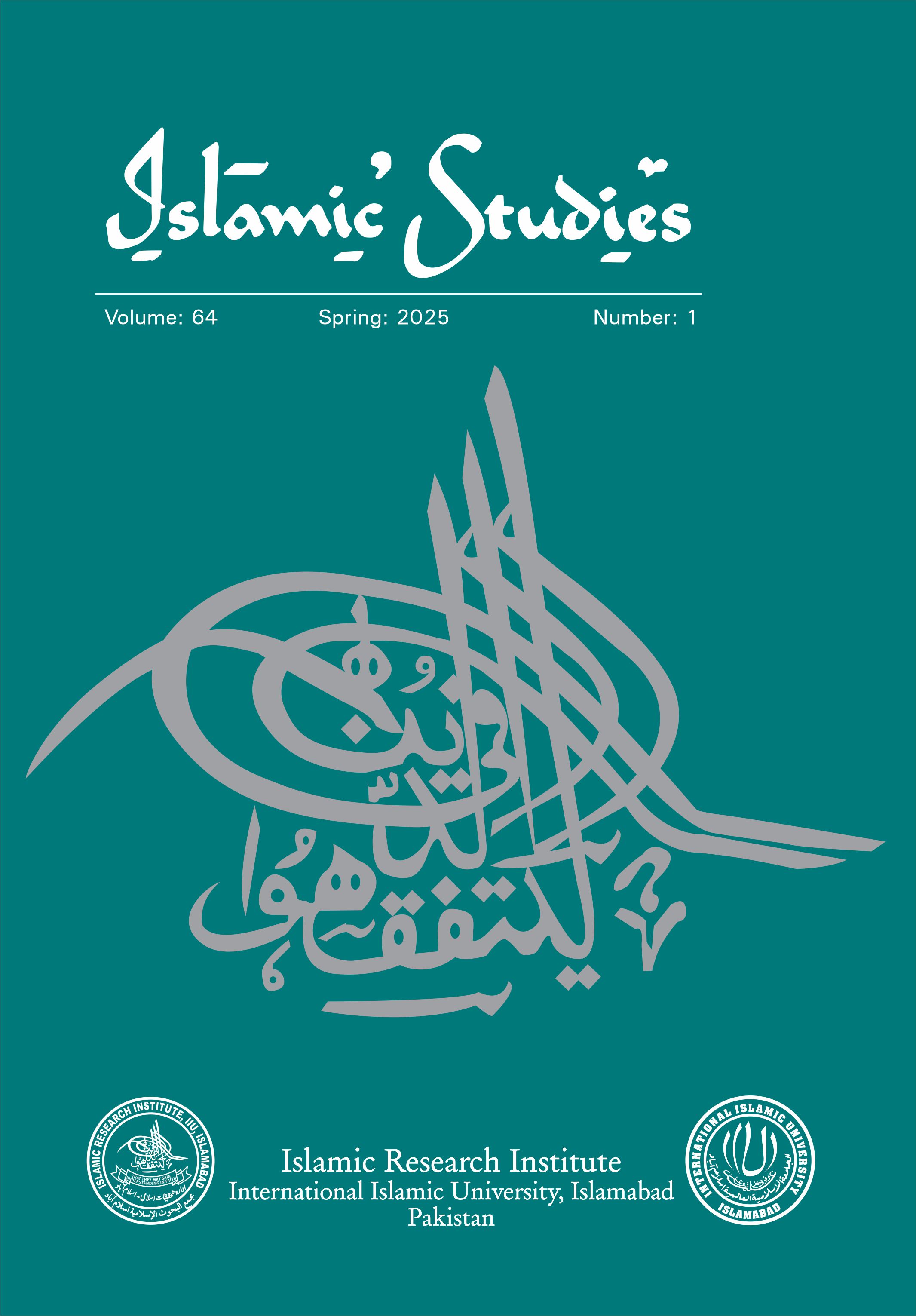The Genesis of the Fatimid Vizierate and its Modus Operandi
DOI:
https://doi.org/10.52541/isiri.v64i1.6027Keywords:
Fatimid caliphate, vizierate, Muslim governance, Egypt, historiography, political institutions.Abstract
The vizier, a pivotal figure in Muslim political history, has often been overlooked in the context of the Fatimid caliphate (297-567/909-1171). While the institution of the vizierate was widespread among Muslim dynasties, its presence and influence within the Fatimid state appear to be inconsistent. Notably, primary and secondary sources of the Fatimid historiography before 362/969, which was during its base in Ifrīqiyyah before the Egyptian conquest, make no mention of viziers, suggesting an absolute absence of the office and the institution. In contrast, the Fatimid sources of Egypt frequently make reference to viziers, indicating a significant shift in the institution’s prominence. Navigating this complexity in Fatimid historiography, this paper focuses on the genesis of the Fatimid vizierate, emphasizing its development into a central administrative institution within the Fatimid caliphate. Through a critical analysis of primary sources, including administrative records and contemporary Fatimid accounts, this study traces the vizierate’s origins and tracks its institutional growth right from the establishment of the Fatimid state in Ifrīqiyyah (297-362/909-969) and its later developments in Egypt (362-567/969-1171). It also distinguishes between the vizier as a title and the vizierate as an institution, highlighting how the connotations of both evolved over time. By contextualizing administrative apparatuses with contemporary political milieus, this research offers new insights into the vizierate’s foundation in the Fatimid State.
References
‘Imād al-Dīn, Idrīs. Ta’rīkh al-Khulafā’ al-Fāṭimiyyīn bi ’l-Ifrīqiyyah: Al-Qism al-Khāṣṣ min ‘Uyūn al-Akhbār. Edited by Muḥammad al-Ya‘lāwī. Beirut: Dār al-Gharb al-Islāmī, 2006.
Al-‘Azīzī, Manṣūr al-Jūdharī. Sīrat al-Ustādh Jūdhar. Edited by Muḥammad Kāmil Ḥusayn and Muḥammad ‘Abd al-Hādī. Cairo: Dār al-Fikr al-‘Arabī, 1954.
Al-Andalusī, Ibn Hāni’. Dīwān. Beirut: Dār Bayrūt li l-Ṭibā‘ah wa ’l-Nashr, 1400 AH.
Al-Fāṭimī, Tamīm b. al-Mu‘izz li Dīn Allāh. Dīwān. Cairo: Dār al-Kutub al-Miṣriyyah, 1377 AH.
Al-Imad, Leila S. The Fatimid Vizierate, 969-1172. Berlin: Schwarz, 1990.
Al-Kātib, ‘Alī b. Khalaf. Mawād al-Bayān. Damascus: Dār al-Bashā’ir, 1424 AH.
Al-Manāwī, Muḥammad Ḥamdī. Al-Wizārah wa ’l-Wuzarā’ fī ’l-‘Aṣr al-Fāṭimī. Cairo: Dār al-Ma‘ārif, 1970.
Al-Maqrīzī, Aḥmad b. ‘Alī. Al-Mawā‘iẓ wa ’l-I‘tibār fī Dhikr al-Khiṭaṭ wa ’l-Āthār. Edited by al-Khalīl al-Manṣūr, 4 vols. Beirut: Dār al-Kutub al-‘Ilmiyyah, 1998.
Al-Maqrīzī, Aḥmad b. ‘Alī. Al-Muqaffā al-Kabīr. Edited by Muḥammad al-Ya‘lāwī, 8 vols. Beirut: Dār al-Gharb al-Islāmī, 1411 AH.
Al-Maqrīzī, Aḥmad b. ‘Alī. Itti‘āẓ al-Ḥunafā bi Akhbār al-A’immah al-Fāṭimiyyīn al-Khulafā. Edited by Jamāl al-Dīn al-Shayyāl, 3 vols. Cairo: Dār al-Taḥrīr li ’l-Ṭab‘ wa ’l-Nashr, 1996.
Al-Māwardī, ‘Alī b. Muḥammad b. al-Ḥabīb. Adab al-Wazīr. Edited by Muḥammad Sulaymān and Fu’ād ‘Abd al-Mun‘im. Alexandria: Dār al-Jāmi‘āt al-Miṣriyyah, 1976.
Al-Māwardī, ‘Alī b. Muḥammad b. al-Ḥabīb. Al-Aḥkām al-Sulṭāniyyah wa ’l-Wilāyah al-Dīniyyah. Edited by Nabīl ‘Abd al-Raḥmān Ḥayawī. Beirut: Dār al-Arqam b. Abī ’l-Arqam, 2016.
Al-Nu‘mān b. Muḥammad. Kitāb al-Himmah fī Ādāb Atbā‘ al-A’immah. Edited by Muḥammad Kāmil Ḥusayn. Cairo: Dār al-Fikr al-‘Arabī, 1955.
Al-Nuʻmān b. Muḥammad. Kitāb al-Majālis wa ’l-Musāyarāt wa ’l-Mawāqif wa ’l-Tawqī‘āt. Edited by al-Ḥabīb al-Faqī, Ibrāhīm al-Shabbūḥ, and Muḥammad al-Ya‘lāwī. Beirut: Dār al-Muntaẓar, 1996.
Al-Nuʻmān b. Muḥammad. Kitāb Iftitāḥ al-Daʻwah. Edited by Farḥāt Dashrāwī, 2nd ed. Tunis: al-Sharikah al-Tūnisiyyah li ’l-Tawzīʻ, 1986.
Al-Qalqashandī, Aḥmad b. ‘Alī. Kitāb Ṣubḥ al-A‘shā fī Ṣinā‘at al-Inshā’, 14 vols. Cairo: Dār al-Kutub al-Miṣriyyah, 1922.
Al-Ṣādiq, ‘Abd al-Mun‘im Muḥammad Jamāl al-Dīn. Fī Ta’rīkh al-Maghrib al-Islāmī: Dirāsah li ’l-Ḥayāh al-Siyāsiyyah wa ’l-Iqtiṣādiyyah bi Ifrīqiyyah. Cairo: Dār al-Fikr al-‘Arabī, 1435 AH.
Al-Shayyāl, Jamāl al-Dīn. Majmū‘at al-Wathā’iq al-Fāṭimiyyah: Wathā’iq al-Khilāfah wa Wilāyat al-‘Ahd wa ’l-Wizārah. Beirut: Maktabat al-Thaqāfah al-Dīniyyah, 2002.
al-Tha‘ālibī, Abū Manṣūr. Tuḥfat al-Wuzarā’. Edited by Sa‘d Abū Diyah. Amman: Dār al-Bashīr, 1994.
Cuttica, Cesare. “What Type of Historian? Conceptual History and the History of Concepts: A Complex Legacy and a Recent Contribution.” History and Theory 51, no. 3 (2012): 411–22.
Daftary, Farhad, and Shainool Jiwa, eds. The Fatimid Caliphate: Diversity of Traditions. London: I. B. Tauris, in association with The Institute of Ismaili Studies, 2018.
Goitein, Shelomo Dov. Studies in Islamic History and Institutions. Leiden: Brill, 2010.
Ḥasan, ‘Alī Ibrāhīm. Ta’rīkh Jawhar al-Ṣiqillī Qā’id al-Mu‘izz li Dīn Allāh al-Fāṭimī. Cairo: Maktabat al-Nahḍah al-Miṣriyyah, 1963.
Ibn ‘Idhārī, Muḥammad al-Marrākishī. Al-Bayān al-Mughrib fī Akhbār al-Andalus wa ’l-Maghrib. Edited by Colan Lévi-Provençal, 3rd ed., 2 vols. Beirut: Dār al-Thaqāfah, 1983.
Ibn al-Athīr, ‘Izz al-Dīn. Al-Kāmil fī ’l-Ta’rīkh. Edited by Abū Ṣuhayb al-Karmī. Riyadh: Bayt al-Afkār al-Duwaliyyah, 2009.
Ibn al-Ṣayrafī, ‘Alī b. Munjib. Al-Qānūn fī Dīwān al-Rasā’il wa ’l-Ishārah ilā Man Nāl al-Wizārah. Edited by Ayman Fu’ād Sayyid. Cairo: al-Dār al-Miṣriyyah al-Lubnāniyyah, 1990.
Ibn Khallikān, Shams al-Dīn. Wafayāt al-A‘yān wa Anbā’ Abnā’ al-Zamān, 8 vols. Beirut: Dār Ṣādir, 1978.
Ibn Qalānsī, Abū Ya‘lā Ḥamzah. Dhail Ta’rīkh Dimashq. Damascus: Maṭba‘at al-Ābā’ al-Yasū‘iyyīn, 1908.
Lev, Yaacov. State and Society in Fatimid Egypt. Leiden: E. J. Brill, 1991.
Mājid, ‘Abd al-Mun‘im. Al-Sijillāt al-Mustanṣiriyyah. Cairo: Dār al-Fikr al-‘Arabī, 1954.
Pernau, Margrit, and Dominic Sachsenmaier. Global Conceptual History: A Reader. London: Bloomsbury Publishing, 2016.
Sanders, Paula. Ritual, Politics, and the City in Fatimid Cairo. Albany, NY: State University of New York Press, 1994.
Sayyid, Ayman Fu’ād. Al-Daulah al-Fāṭimiyah fī Miṣr: Tafsīr Jadīd. Cairo: al-Dār al-Miṣriyyah al-Lubnāniyyah, 1413 AH.
Shaw, Ian. ed. The Oxford History of Ancient Egypt, new ed. Oxford: Oxford University Press, 2003.
Walker, Paul Ernest. Exploring an Islamic Empire: Fatimid History and Its Sources. London: I. B. Tauris, 2002.
Downloads
Published
How to Cite
Issue
Section
License
Publication of material in the journal means that the author assigns copyright to Islamic Studies including the rights to electronic publishing. This is, inter alia, to ensure the efficient handling of requests from third parties to reproduce articles as well as to enable wide dissemination of the published material. Authors may, however, use their material in other publications acknowledging Islamic Studies as the original place of publication. Requests by third parties for permission to reprint should be addressed to the Editor, Islamic Studies.


